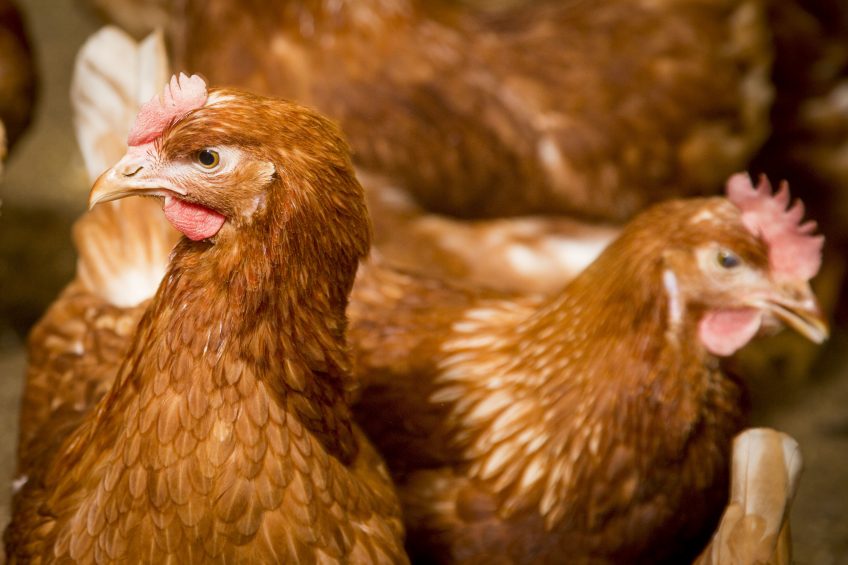Managing free-range layers during a housing order

Last year free-range birds across the UK were forcibly housed to mitigate the risk of commercial flocks’ exposure to avian influenza. A new survey, presented at the Society of Feed Technologists Poultry conference, sought to discover the impact on bird performance.
Free-range hens subject to sudden housing tend to have poorer feather cover and can display flighty and anxious behaviour but, overall, most flocks record only a small impact on performance.
A new survey, taken after last winter’s housing order, found in some ways there is “little to say” about the effect on birds, according to its author Keiron Forbes, technical director at Agri-Research Ireland. He conducted a poll of egg packers in Northern Ireland, as well as individual free-range farmers, representing some 4.5 million layers to determine what influence housing had on production.
The survey asked about farmers’ overall impression of having birds closed in, the impact on production, whether housing system had an influence and what farmers might do differently in future.
Performance
The result was that, “if anything, birds performed slightly better”, says Mr Forbes. “People didn’t want to shout that from the rooftops as it may not be politically correct to say so, but that was the reality. The best ranging flocks were probably the ones that suffered the most – and that’s not a surprise, he explains.
“Those birds enjoyed the outdoors, were trained to expect it and got used to it, so not having the ability to do so caused a certain amount of stress.”
Smothering was recorded at the time birds “expected” pop holes to open at the beginning of the day, as they “queued up” to access the outdoors.
“Smothering is probably the one thing that we all feared – there was a lot less than we thought there was going to be, but it did happen.”
Pre-starter diets cruicial component in broiler performanceEven a pre-starter diet of sawdust will improve weight gain in the first 4 days of a broiler chick’s life, such is the value of its addition to poultry rations. |
Youngest production dropped
Considering performance in the initial adjustment period, it was the youngest flocks that showed the worst reaction in terms of performance figures. “This was probably because they were at a higher performance level and so any wobbles in production were exaggerated,” explains Mr Forbes.
Most, he suggests, said there was only a moderate effect on egg production, but looking in more detail reveals some anomalies, both negative and positive. “The largest and most unanimously noticed effect was the reduction in pale shelled eggs and, to a lesser degree, other abnormalities,” adds Mr Forbes. Egg size and uniformity was also marginally increased, but feed consumption – and therefore cost – was also up. “Overall, the quality of eggs increased.”
This went against “perceived wisdom”, he says. Most had assumed consumption would decrease given birds were no longer expending energy while ranging in the day. But it was thought that both boredom, to a degree, as well as increased access to feed drove consumption up.
The difference between housing systems was “marked”, according to Mr Forbes. Respondents to the survey found birds in multi-tier systems had far fewer problems with smothering – “multi-tier birds just didn’t seem to notice”.
Management
From the experience of farmers Mr Forbes spoke to, there were a few tips that may improve the management of free-range birds suddenly housed.
One factor many had not considered was the impact not opening pop holes had on shed ventilation. “If you’re in a colony house you can control everything, you know how to set ventilation and you know your parameters,” he says. “What the housing order showed a lot of producers was that they didn’t have as much control over ventilation as they thought they did. Better management certainly became an issue.”
Manure management, too, played a role as birds did not have the range space to defecate, meaning a higher concentration in sheds. Another finding was that houses with larger scratch areas afforded birds more space to explore, dust bathe and exhibit natural behaviour, and therefore they adjusted faster.
Stagger pop holes
But considering practical management, a recurring suggestion was to potentially stagger the opening of pop holes in the run up to a full housing order, disrupting the routine of birds that expect access to the routine at the same time each day. Another suggestion from Mr Forbes was keeping feeders fuller, and running them less often while birds are housed, to discourage drawing flocks to food so frequently.













